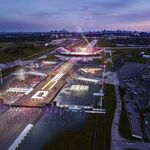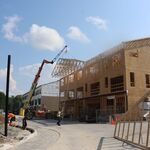TheTigerMaster
Superstar
How would you even collect fees from cyclists? Do we collect fees from little ten year olds riding their bikes on the road?
I would love to see the bill for that. It would probably amount to a few cents/year.
How would you even collect fees from cyclists? Do we collect fees from little ten year olds riding their bikes on the road?
Don't forget that using a bicycle causes the cyclists to eat more food (more production required) and use more air than they otherwise would (more CO2), causing more greenhouse emissions.
One thing which always kind of pissed me off is that those in Northern Ontario only pay half the annual fee to register their cars compared to Southern Ontario.
I would not know how to go about this calculation, but I always wonder if bicycles pollute more that cars.
There is a whole bunch of pollution required to pava a road, and then there are very small amounts of pollution produced by each car - and none by bicycle. Now if you divide the paving pollution up in the ratio of 1.5 to 3.25 for bicycle and cars (bike lane = 1.5m, car lane = 3.25m) and divide by the number of users for the life of the road (which is probably several orders of magnitude higher for cars), then it could well be that the bike lane and bikes using them produced more pollution than the car lanes and the cars.




